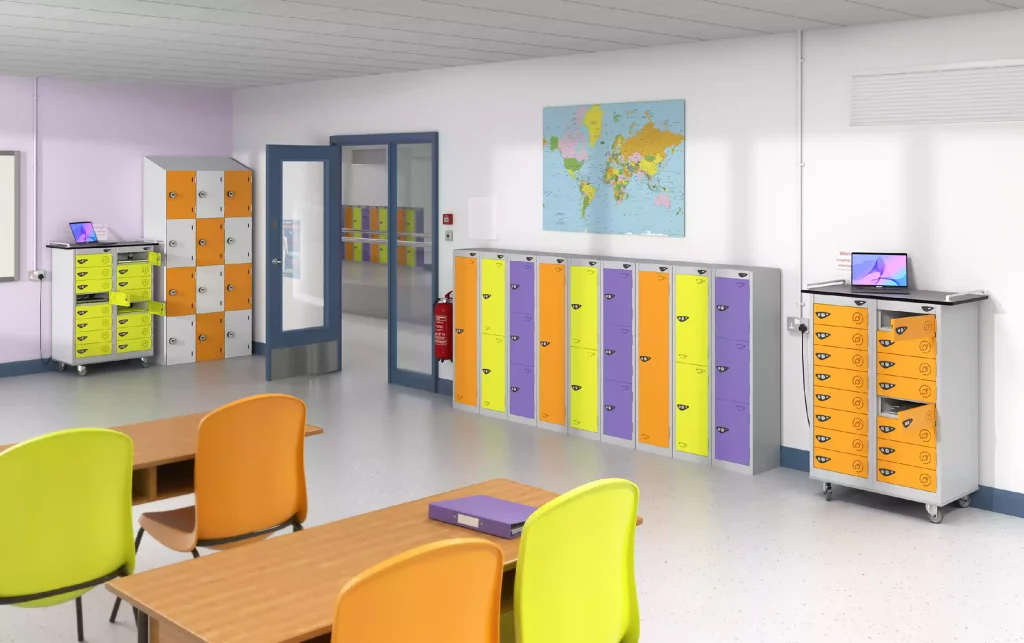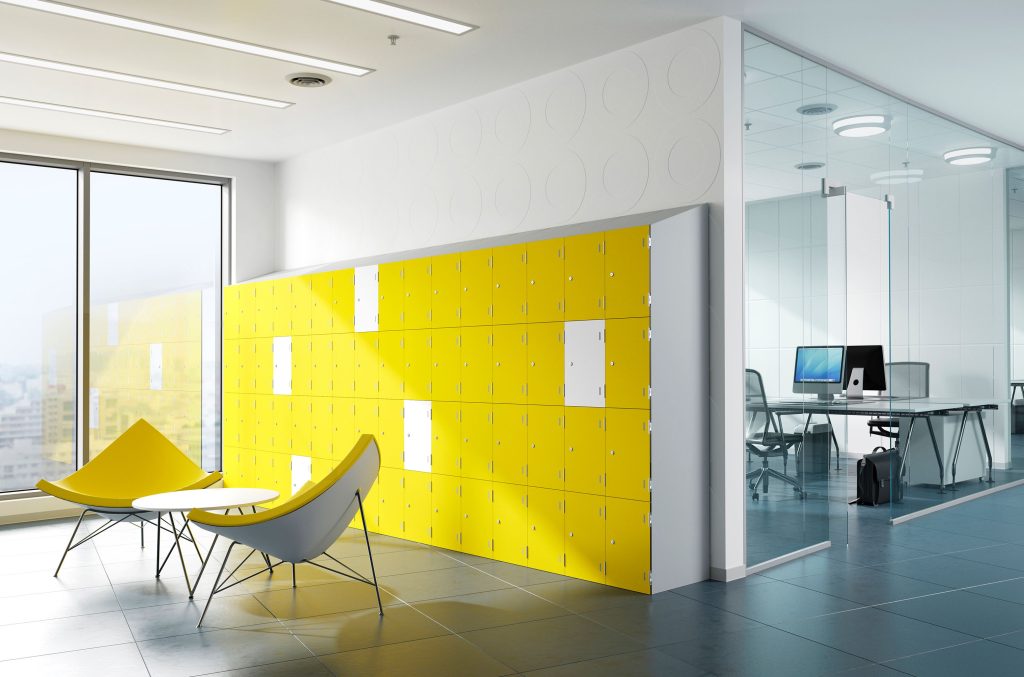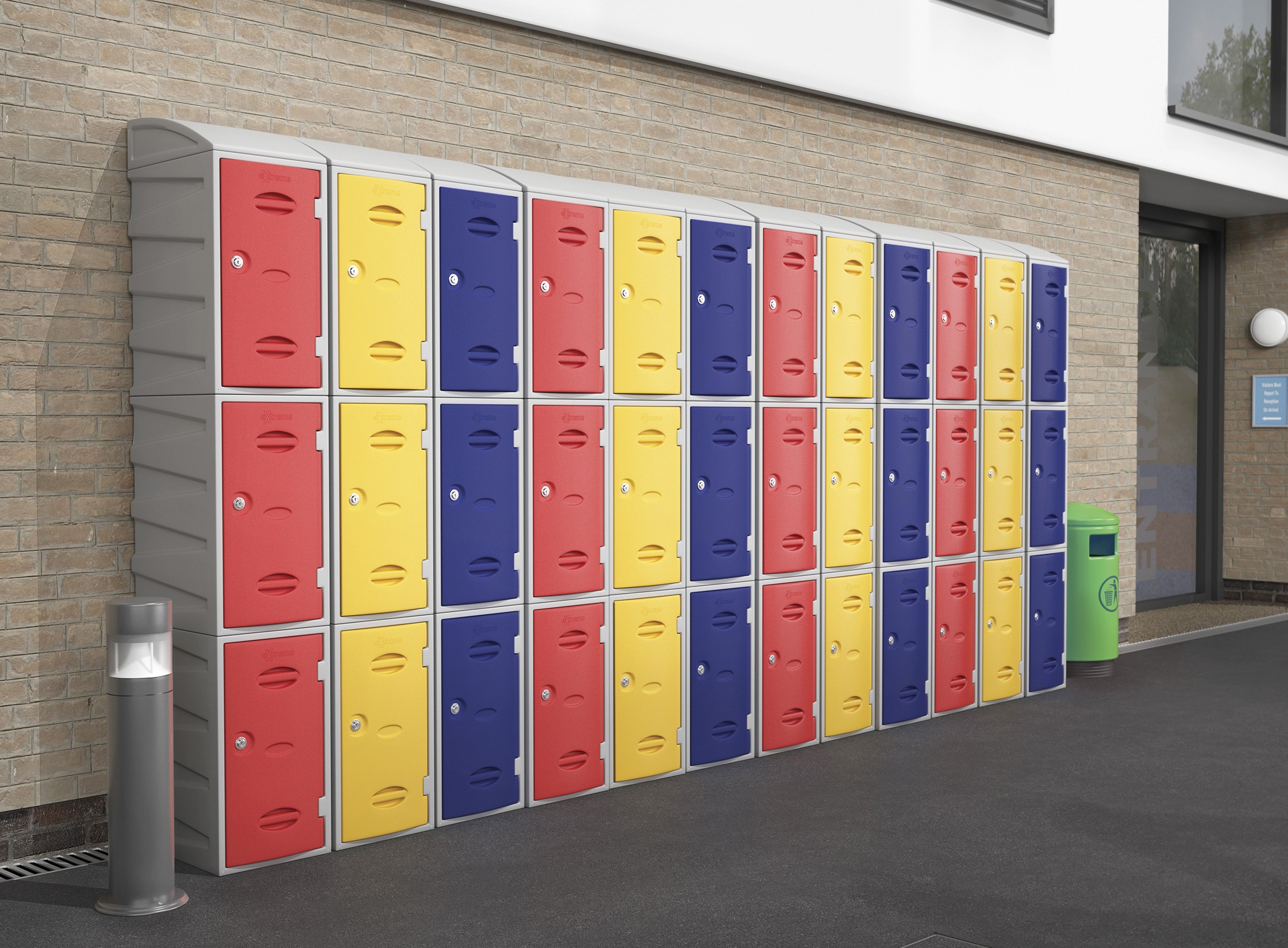Why Locker Maintenance Matters
Commercial lockers represent a significant investment for any organisation. Moreover, proper maintenance ensures these assets deliver value for years to come. Furthermore, neglected lockers create safety hazards, reduce employee satisfaction, and increase replacement costs dramatically.
This comprehensive locker maintenance guide UK explores proven strategies for organisations across the country. Additionally, we examine cost-effective approaches to repairs and lifecycle management. Subsequently, you’ll discover how preventive maintenance protects your investment whilst ensuring compliance with workplace regulations.
British businesses spend millions annually on locker replacements. However, many premature failures result from inadequate maintenance rather than inherent product deficiencies. Therefore, understanding proper care techniques saves substantial amounts over time.

Understanding Locker Lifecycle and Maintenance Needs
The Three Phases of Locker Life
Every locker system progresses through distinct lifecycle phases. Initially, new installations require minimal intervention beyond basic cleaning. Subsequently, regular wear necessitates increased attention and minor repairs. Eventually, strategic replacement becomes more economical than continued maintenance.
Early Life (Years 0-3)
New lockers typically perform flawlessly during this period. Nevertheless, establishing maintenance routines now prevents future problems. Furthermore, early intervention addresses manufacturing defects before warranty expiration.
Basic cleaning schedules prevent dirt accumulation that accelerates wear. Additionally, user education reduces misuse and accidental damage. Moreover, documenting initial condition provides valuable baseline information for future assessments.
Mid Life (Years 4-10)
This phase sees increased maintenance requirements as components age. Specifically, locks begin requiring adjustment or replacement. Moreover, hinges may develop play or squeaking. Additionally, surface coatings can show wear in high-traffic areas.
Preventive maintenance becomes increasingly cost-effective during this period. Furthermore, addressing minor issues prevents escalation into major failures. Subsequently, planned maintenance costs significantly less than emergency repairs.
Late Life (Years 11+)
Eventually, cumulative wear makes replacement more economical than continued maintenance. However, well-maintained lockers often exceed expected lifespans considerably. Moreover, strategic upgrades can extend functionality beyond original specifications.
Assessment criteria should include repair frequency, parts availability, and current condition. Additionally, consider whether modern smart locker solutions offer significant operational advantages justifying earlier replacement. Therefore, lifecycle analysis guides optimal replacement timing.
Common Locker Problems and Their Causes
Understanding typical failure modes helps prevent recurring issues. Moreover, recognising warning signs enables early intervention before complete failure.
Locking Mechanism Failures
Locks represent the most frequently failing locker component. Specifically, mechanical locks suffer from key wear, cylinder corrosion, and internal mechanism degradation. Furthermore, electronic locks face battery depletion and software glitches.
Many lock problems stem from environmental factors rather than inherent defects. Additionally, user abuse accelerates wear significantly. Moreover, inadequate lubrication causes premature failure in mechanical systems.
Structural Damage
Dents, scratches, and deformation compromise both function and appearance. Furthermore, severe impacts can misalign doors and compromise security. Additionally, rust development threatens structural integrity over time.
Prevention requires understanding root causes beyond obvious physical damage. Moreover, environmental conditions significantly affect degradation rates. Subsequently, addressing underlying factors prevents recurring damage.
Hinge and Door Issues
Sagging doors indicate hinge wear or improper installation. Additionally, squeaking announces inadequate lubrication. Furthermore, binding suggests misalignment or warped components.
Regular inspection identifies hinge problems before they affect functionality. Moreover, prompt adjustment prevents accelerated wear on related components. Therefore, hinge maintenance forms a critical element of overall care programmes.
Developing an Effective Maintenance Programme
Creating Your Maintenance Schedule
Systematic approaches deliver superior results compared to reactive maintenance strategies. Moreover, scheduled inspections catch problems early when repairs remain simple. Furthermore, documented programmes demonstrate due diligence for compliance purposes.
Daily Tasks
Quick visual inspections identify obvious problems requiring immediate attention. Specifically, check for hanging doors, damaged locks, and visible vandalism. Moreover, ensure cleaning staff report any issues discovered during routine work.
These rapid checks take minimal time yet provide substantial benefits. Additionally, early detection prevents minor issues escalating overnight. Therefore, incorporating locker checks into existing rounds maximises efficiency.
Weekly Tasks
More thorough inspections examine components not visible during daily checks. Furthermore, test random lock functionality across different locker banks. Additionally, verify cleaning effectiveness and identify areas needing extra attention.
Weekly schedules should rotate through different sections systematically. Moreover, this approach ensures comprehensive coverage without overwhelming staff. Subsequently, patterns of recurring problems become apparent through consistent documentation.
Monthly Tasks
Comprehensive examinations assess overall system condition and identify developing trends. Specifically, detailed lock testing reveals deteriorating mechanisms before complete failure. Moreover, structural assessments catch rust development in early stages.
Monthly reviews should include parts inventory checks ensuring adequate stock levels. Additionally, review maintenance logs identifying recurring issues requiring systemic solutions. Furthermore, schedule any identified repairs promptly to prevent problem accumulation.
Quarterly Tasks
In-depth assessments examine components typically overlooked in routine checks. Moreover, professional inspections can identify issues requiring specialised expertise. Additionally, deep cleaning removes accumulated grime from hidden areas.
Quarterly reviews provide opportunities to assess maintenance programme effectiveness. Furthermore, adjust schedules based on actual experience rather than theoretical requirements. Subsequently, continuous improvement maintains optimal resource allocation.
Annual Tasks
Comprehensive system audits evaluate overall condition and remaining service life. Specifically, assess whether continued maintenance remains economically justified. Moreover, plan capital replacements based on lifecycle analysis.
Annual reviews should coincide with budget planning cycles. Additionally, multi-year maintenance plans help predict future expenditure accurately. Therefore, strategic planning prevents unexpected capital outlays.

Essential Maintenance Tasks and Techniques
Cleaning Procedures
Proper cleaning extends locker life whilst maintaining professional appearance. However, incorrect products or techniques can cause damage exceeding the benefits gained.
Surface cleaning should use pH-neutral cleaners avoiding harsh chemicals. Moreover, microfibre cloths prevent scratching whilst removing dirt effectively. Additionally, ensure complete drying prevents moisture-related corrosion.
Interior cleaning requires similar care with attention to ventilation slots. Furthermore, remove debris accumulation that can harbour pests or create odours. Subsequently, quarterly deep cleaning maintains hygienic conditions.
Powder-coated surfaces tolerate gentle cleaning but resist abrasive methods poorly. Moreover, stainless steel requires specific products preventing streaking and corrosion. Therefore, understanding material-specific requirements protects finish quality.
Lock Maintenance
Mechanical lock longevity depends heavily on proper lubrication and adjustment. Specifically, graphite-based lubricants prevent gumming whilst reducing friction. Moreover, regular application prevents internal corrosion.
Lock testing should verify smooth operation without excessive force requirements. Additionally, check that locks engage fully without partial deployment. Furthermore, confirm keys turn freely without binding or sticking.
Electronic lock maintenance focuses on battery replacement and connection integrity. Moreover, software updates address security vulnerabilities and functional improvements. Subsequently, manufacturer guidance ensures warranty compliance.
Hinge Care
Well-maintained hinges operate silently whilst supporting doors properly throughout their range. However, neglected hinges develop squeaks, sagging, and eventual failure.
Lubrication should use appropriate products avoiding attracting dirt accumulation. Moreover, petroleum-based lubricants often worsen problems in dusty environments. Therefore, dry lubricants frequently provide superior long-term results.
Hinge adjustment compensates for settling and wear over time. Additionally, proper alignment prevents uneven stress distribution accelerating failure. Furthermore, replacing worn hinge pins restores original functionality economically.
Surface Protection
Preventive measures protect finishes from damage requiring expensive restoration. Moreover, strategic placement of protective elements reduces wear in vulnerable areas.
Anti-graffiti coatings enable easy removal of marker and paint vandalism. Additionally, these products protect underlying finishes from chemical damage. Furthermore, regular reapplication maintains protective effectiveness.
Touch-up paint addresses minor scratches before rust development begins. Moreover, prompt treatment prevents small problems expanding into major corrosion. Subsequently, maintaining finish integrity preserves structural protection.
Repair Strategies and Parts Management
When to Repair Versus Replace
Economic analysis should guide repair-versus-replace decisions rather than arbitrary rules. Moreover, consider downtime costs alongside direct repair expenses. Furthermore, factor in remaining service life when evaluating repair investments.
Minor Repairs
Simple fixes costing under 20% of replacement value typically warrant immediate execution. Moreover, these repairs often prevent cascading failures affecting adjacent components. Additionally, prompt action demonstrates responsive facility management.
Examples include lock cylinder replacement, hinge adjustment, and minor dent repair. Furthermore, these interventions typically require minimal time and expertise. Therefore, maintaining in-house capability for common repairs improves response times.
Major Repairs
Significant interventions costing 50% or more of replacement value require careful justification. Specifically, consider whether repairs address root causes or merely symptoms. Moreover, evaluate whether repaired units will provide adequate remaining service life.
Door replacement, extensive rust remediation, and complete lock system overhauls represent major repairs. Additionally, these interventions may require professional expertise beyond in-house capabilities. Subsequently, obtaining competitive quotations ensures cost-effectiveness.
Strategic Replacement
Sometimes replacement proves more economical despite apparently reparable conditions. Moreover, modern alternatives may offer substantial operational improvements justifying earlier replacement. Furthermore, standardising on current models simplifies future maintenance.

Building an Effective Parts Inventory
Strategic parts stocking enables rapid repairs without excessive capital tie-up. Moreover, focusing on high-failure items provides maximum benefit. Additionally, establishing supplier relationships ensures rapid access to unusual components.
Essential Stock Items
Common locks, keys, hinges, and fasteners should remain readily available. Moreover, these components fail frequently enough to justify inventory investment. Additionally, their relatively low cost minimises carrying expenses.
Maintaining adequate stock prevents extended downtime awaiting deliveries. Furthermore, standardising components across installations simplifies inventory management. Subsequently, bulk purchasing delivers economies of scale.
Supplier Relationships
Reliable suppliers provide crucial support for unusual or emergency requirements. Moreover, established relationships often enable preferential pricing and priority service. Additionally, supplier expertise supplements in-house knowledge.
Total Locker Service maintains comprehensive parts inventories supporting various locker systems. Furthermore, their technical expertise helps identify correct components rapidly. Subsequently, partnering with experienced suppliers streamlines maintenance operations.
Specialised Maintenance Considerations
School Locker Maintenance
Educational environments present unique maintenance challenges requiring tailored approaches. Specifically, concentrated usage during term times accelerates wear patterns. Moreover, younger users may lack care experience found in workplace settings.

High-Traffic Management
School lockers endure intensive daily use creating accelerated wear. Additionally, rushed students may abuse equipment unintentionally. Furthermore, social dynamics sometimes result in deliberate vandalism.
Increased inspection frequency during term times catches problems early. Moreover, holiday periods provide opportunities for comprehensive maintenance without disrupting users. Subsequently, aligning major work with school calendars minimises impact.
Vandalism Prevention and Response
Anti-vandalism measures reduce damage frequency whilst maintaining functionality. Moreover, rapid repair of damage discourages further incidents. Additionally, visible maintenance demonstrates institutional care deterring casual vandalism.
Understanding the psychology of school environments helps develop effective prevention strategies. Furthermore, engaging students in locker care promotes ownership and responsibility.
Gym and Leisure Facility Lockers
Humid environments and frequent use characterise leisure facility requirements. Moreover, constant exposure to moisture demands corrosion-resistant materials and enhanced maintenance.

Moisture Management
Ventilation becomes critical in preventing moisture accumulation causing rust. Additionally, drainage provisions prevent water pooling around locker bases. Furthermore, regular drying of interiors reduces mould and mildew development.
Stainless steel and marine-grade coatings provide enhanced moisture resistance. Moreover, these materials justify higher initial costs through reduced maintenance requirements. Subsequently, material selection significantly affects lifecycle costs.
Hygiene Considerations
Frequent cleaning maintains hygienic conditions expected in leisure environments. Moreover, antimicrobial coatings can supplement regular cleaning protocols. Additionally, adequate ventilation prevents odour development from damp contents.
Gym and leisure lockers benefit from specialised cleaning products designed for humid environments. Furthermore, following industry hygiene standards ensures safe environments for all users.
Workplace Locker Maintenance
Commercial environments require professional appearance alongside functionality. Moreover, Health and Safety Executive regulations mandate adequate maintenance. Furthermore, duty of care obligations require demonstrable maintenance programmes.
Compliance Documentation
Recorded maintenance demonstrates regulatory compliance and due diligence. Additionally, documentation supports insurance claims and legal proceedings. Moreover, systematic records identify recurring problems requiring permanent solutions.
Digital maintenance management systems streamline record-keeping whilst ensuring completeness. Furthermore, automated reminders prevent missed inspections or services. Subsequently, technology-enabled approaches improve consistency and compliance.
Professional Appearance
Workplace lockers reflect organisational professionalism and care standards. Moreover, well-maintained facilities improve employee satisfaction and retention. Additionally, visitors form impressions based partly on facility conditions.
Preventive Maintenance Best Practices
User Education and Engagement
Proper locker use significantly extends equipment life whilst reducing maintenance costs. Moreover, educated users report problems promptly enabling early intervention. Furthermore, stakeholder buy-in improves programme effectiveness.
Training Programmes
Comprehensive user orientation covers proper operation and care expectations. Additionally, emphasis on gentle use prevents abuse-related damage. Moreover, explaining maintenance benefits encourages cooperative behaviour.
Regular reminders maintain awareness as user populations change. Furthermore, visual guides near locker areas reinforce proper procedures. Subsequently, continuous education maximises user cooperation.
Reporting Systems
Simple reporting mechanisms encourage users to identify problems promptly. Moreover, accessible channels reduce barriers to communication. Additionally, responsive resolution demonstrates that reports receive serious attention.
Digital reporting via apps or web forms streamlines information collection. Furthermore, automated routing ensures appropriate personnel receive notifications. Subsequently, technology-enabled systems improve responsiveness whilst maintaining records.
Environmental Controls
Controlling environmental conditions dramatically affects locker longevity. Specifically, humidity, temperature, and air quality significantly impact degradation rates. Moreover, strategic placement reduces exposure to damaging conditions.
Climate Management
Maintaining stable temperature and humidity prevents accelerated corrosion and material degradation. Additionally, adequate ventilation prevents moisture accumulation in enclosed spaces. Furthermore, climate control protects locker contents alongside the units themselves.
Dehumidification may prove necessary in naturally humid locations. Moreover, heating prevents condensation during cold periods. Subsequently, environmental management forms part of comprehensive maintenance strategies.
Strategic Placement
Avoiding locations exposed to water spray or extreme conditions extends equipment life. Additionally, adequate clearance around installations facilitates maintenance access. Moreover, grouping similar use-intensity areas simplifies tailored maintenance approaches.
Consider traffic flow patterns when planning locker installations to minimise accidental damage. Furthermore, proper lighting improves visibility reducing user-induced damage.
Cost-Benefit Analysis of Maintenance Programmes
Calculating Maintenance ROI
Justifying maintenance expenditure requires demonstrating financial benefits exceeding costs. Moreover, comprehensive analysis includes both direct and indirect benefits. Additionally, long-term perspective reveals advantages invisible in annual budgets.
Direct Cost Savings
Preventive maintenance reduces emergency repair frequency and associated premium costs. Moreover, extended equipment life defers capital replacement expenditure. Additionally, reduced downtime minimises operational disruption expenses.
Studies demonstrate that preventive maintenance typically costs 25-40% less than reactive approaches. Furthermore, planned maintenance enables competitive tendering unavailable for emergency work. Subsequently, financial analysis strongly favours systematic programmes.
Indirect Benefits
Well-maintained facilities improve user satisfaction affecting retention and reputation. Moreover, demonstrated care fulfils duty of care obligations reducing liability exposure. Additionally, professional appearance influences stakeholder perceptions positively.
Employee satisfaction surveys correlate facility conditions with overall workplace satisfaction. Furthermore, maintenance quality affects organisational reputation among prospective employees. Therefore, indirect benefits often exceed direct cost savings.
Budgeting for Maintenance
Realistic budget allocation ensures adequate resources without excessive expenditure. Moreover, multi-year planning smooths costs preventing budget shocks. Additionally, contingency provisions accommodate unexpected issues without crisis.
Annual maintenance costs typically range from 2-5% of replacement value. However, actual requirements vary based on age, environment, and usage intensity. Subsequently, historical data provides the most accurate budget forecasting.
Working with Professional Maintenance Providers
Selecting Service Partners
Professional maintenance services supplement in-house capabilities for specialised requirements. Moreover, outsourcing can prove more economical than developing internal expertise. Additionally, experienced providers bring industry knowledge and proven techniques.
Evaluation Criteria
Provider assessment should consider technical expertise, response times, and pricing structure. Moreover, verify relevant certifications and insurance coverage. Additionally, request references from comparable organisations.
Total Locker Service offers comprehensive maintenance packages tailored to specific requirements. Furthermore, their experienced technicians address issues efficiently using quality replacement parts. Subsequently, partnering with established providers ensures reliable service delivery.
Contract Structures
Maintenance agreements should clearly define service scope, response times, and pricing. Moreover, performance metrics enable objective quality assessment. Additionally, escalation procedures ensure critical issues receive appropriate priority.
Fixed-price contracts provide budget certainty whilst incentivising efficient service delivery. However, flexible arrangements may better suit unpredictable requirements. Therefore, contract structure should align with organisational preferences and risk tolerance.
Maintaining Productive Relationships
Successful partnerships require clear communication and mutual respect. Moreover, providing feedback enables continuous service improvement. Additionally, collaborative problem-solving addresses challenges more effectively than adversarial approaches.
Regular review meetings assess performance and identify improvement opportunities. Furthermore, open discussion of challenges enables proactive solutions. Subsequently, strong relationships deliver superior long-term outcomes.
Future-Proofing Your Locker Investment
Emerging Maintenance Technologies
Technological advances create new maintenance opportunities alongside challenges. Moreover, IoT-enabled lockers provide real-time monitoring capabilities. Additionally, predictive analytics identify potential failures before occurrence.
Smart locker systems generate usage data informing maintenance scheduling. Furthermore, automated alerts notify staff of developing problems immediately. Subsequently, technology integration optimises maintenance efficiency and effectiveness.
Organisations exploring IoT-enabled storage solutions should consider maintenance implications during specification. Moreover, ensure compatibility with existing facility management systems.
Sustainability Considerations
Environmental responsibility increasingly influences maintenance decisions. Moreover, extending equipment life reduces waste and manufacturing impacts. Additionally, sustainable practices align with corporate social responsibility objectives.
Eco-friendly cleaning products and lubricants reduce environmental impact. Furthermore, parts recycling and responsible disposal demonstrate environmental commitment. Subsequently, sustainable maintenance practices support broader organisational goals.
The BIFMA sustainability standards provide guidance for environmentally responsible facility management. Moreover, documenting sustainable practices enhances corporate reputation.

Conclusion: Protecting Your Locker Investment
Effective locker maintenance delivers substantial financial and operational benefits. Moreover, systematic approaches prevent problems before they impact users. Furthermore, professional maintenance demonstrates organisational competence and care.
Successful programmes balance preventive activities with responsive repair capabilities. Additionally, appropriate resource allocation ensures sustainability without excessive expenditure. Moreover, continuous improvement maintains optimal effectiveness as conditions change.
The investment in proper maintenance protects capital assets whilst ensuring regulatory compliance. Furthermore, well-maintained facilities improve user satisfaction and organisational reputation. Subsequently, comprehensive maintenance programmes serve multiple strategic objectives simultaneously.
Organisations seeking expert maintenance support should consider established providers like Total Locker Service. Their comprehensive maintenance packages, experienced technicians, and extensive parts inventory ensure reliable long-term support. Moreover, their industry expertise helps optimise maintenance strategies for maximum effectiveness.
Proper locker maintenance represents sound business practice protecting investments whilst serving user needs effectively. Therefore, implementing systematic maintenance programmes should constitute a strategic priority for any organisation relying on locker systems.
Need Professional Locker Maintenance?
Contact Total Locker Service today for expert maintenance solutions tailored to your facility’s needs. Our team provides comprehensive inspections, repairs, and preventive maintenance programmes across the UK.
Phone: 01284 749211
Email: sales@totallocker.co.uk
Related Articles
- Understanding Locker Installation Costs
- Smart Locker Technology Guide
- Workplace Locker Laws UK: A Comprehensive Guide
